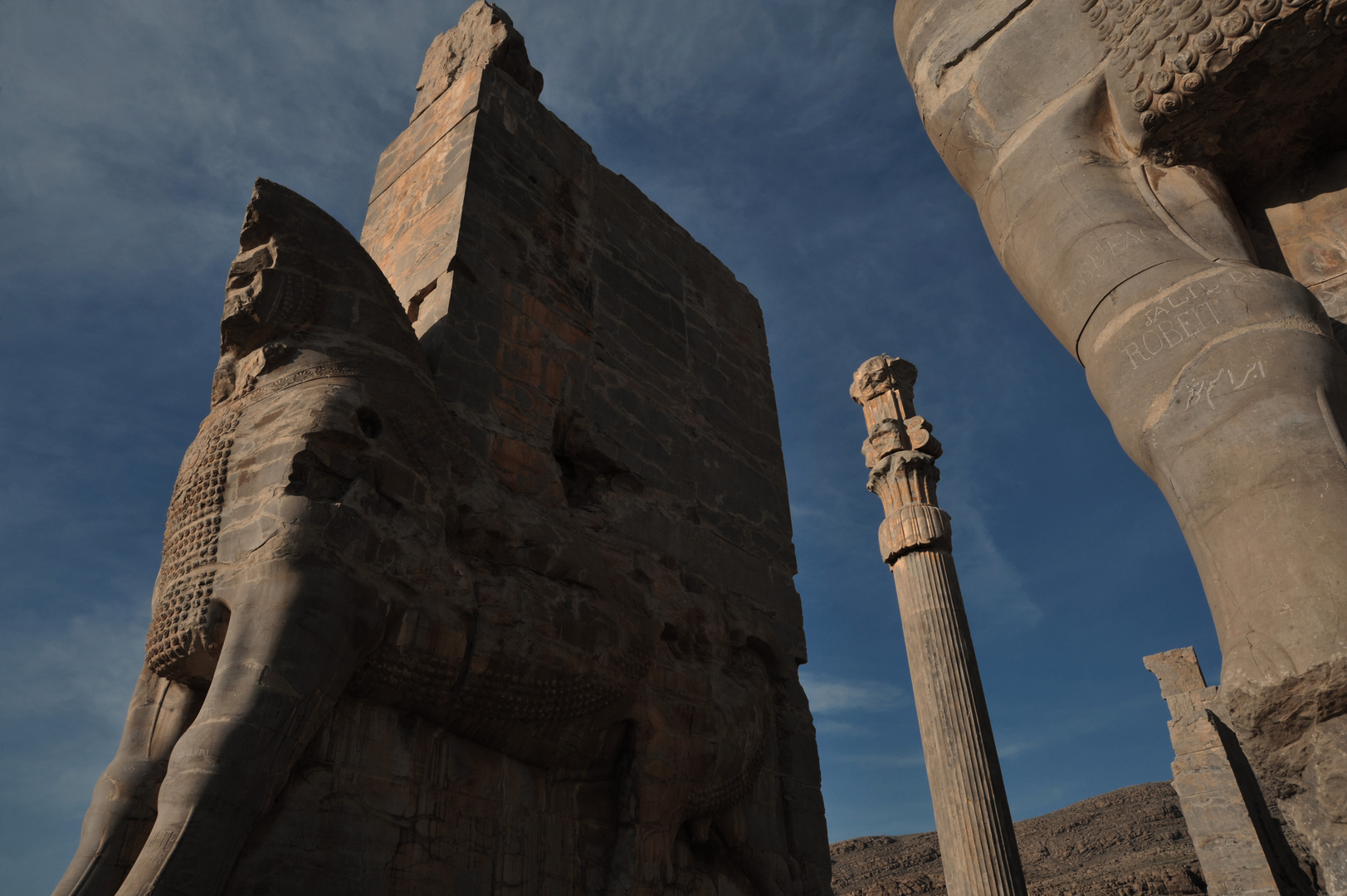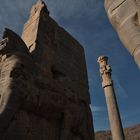Signature forbidden!
Persepolis: Gate of All Nations , Shiraz
Some signatures on it which really makes me sad are coming from both high and low cultured people . I can not stop asking myself what is going on their mindless thought to do such a cheap act to destroy what is not belong to them but to the world?
There are some as follows :
Signature of Malcolm Meade
Cornelis de Bruijn's signature
Signature of Arthur de Gobineau
Signature of Henry Stanley
Maurits van Wagenvoort's fake signature and other Various signatures .
........
Some info :
The construction of the Stairs of All Nations and the Gate of All Nations was ordered by the Achaemenid king Xerxes (486-465), the successor of the founder of Persepolis, Darius I the Great. Originally, the main access was in the south; now, one had to ascend to the terrace from the west.
Like Gate R in Pasargadae, the entrance of the Gate of All Nations was protected by bulls (front) and these mythological creatures, called lamassu's, bulls with the head of a bearded man. These bull-men originated in Babylonia and Assyria, but the Persians adopted them. The general idea behind them is that they warded off evil.
Ancient-Warfare.com, the online home of Ancient Warfare magazine
The Gate of all Nations, eastern entrance. Photo Marco Prins.
Gate of all Nations, eastern entrance
The entire monument was a giant construction with two large doors in the west and east and a hall between them. The columns of the central halls were 16½ meters high. The capitals had the form of a double bull. A third entrance was to the south. From here, one could walk to the Apadana.
In the mid-fourth century, the main exit was no longer to the Apadana but to the Hall of hundred columns; when the palaces were sacked by Alexander the Great, Persian artisans were building the Army road that was to connect these two buildings.
Gate of All Nations, inscription XPa. Photo Marco Prins.
Inscription XPa
The ancient inscription in the gate, which is known as XPa. To the left and right of the Old Persian text are Babylonian and Elamite translations.










H.CH.Yaseri 20/10/2011 15:52
100% agree Ingrid .Regards to you and dear Christian
Christian Bertero 19/10/2011 22:11
Congratulations. ++++Christian
Ingrid H 19/10/2011 11:08
you are so right!!!!!!!! and I often thought the same when I saw these *signatures*... sorry... like dogs marking their own place with pi..... no less, no more.........best regards, ingrid h
persepolis
Hannover -fan